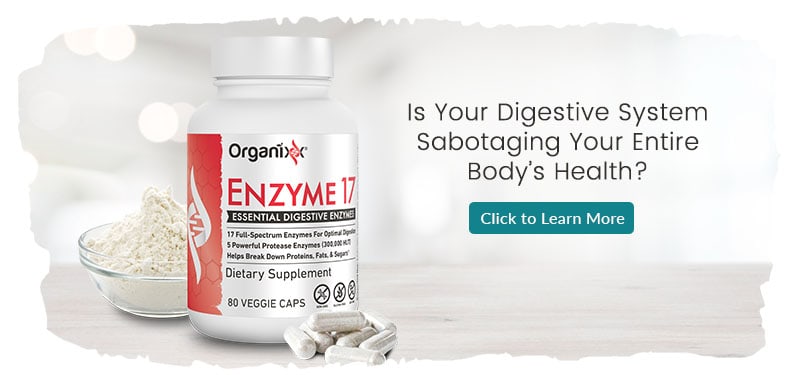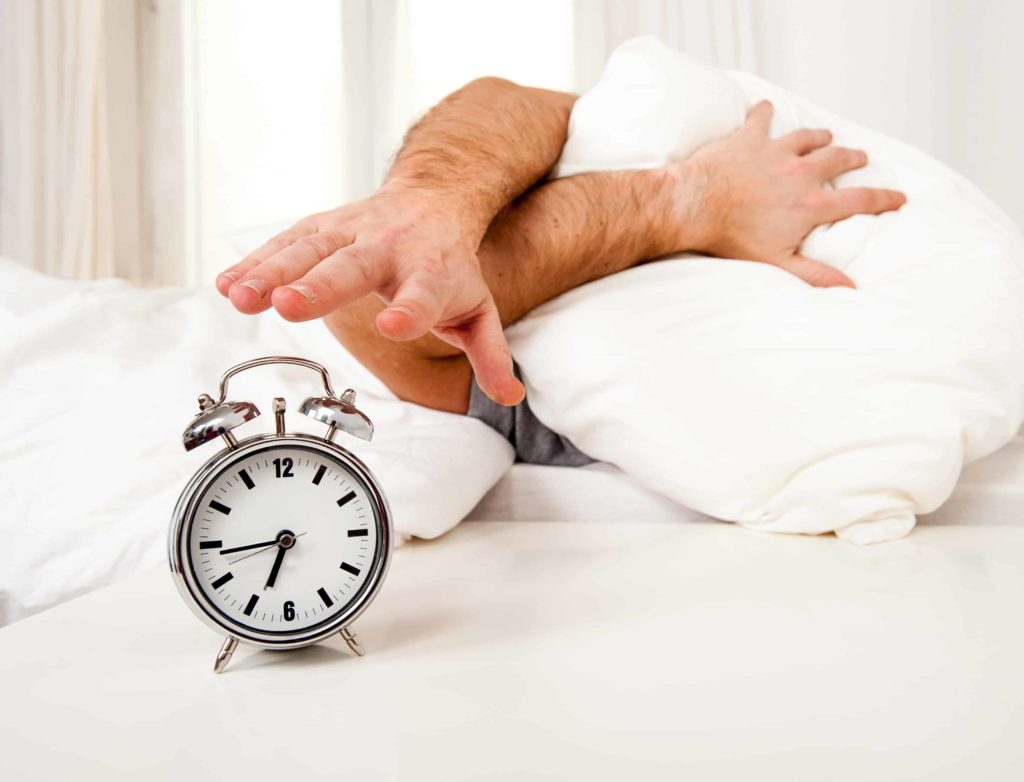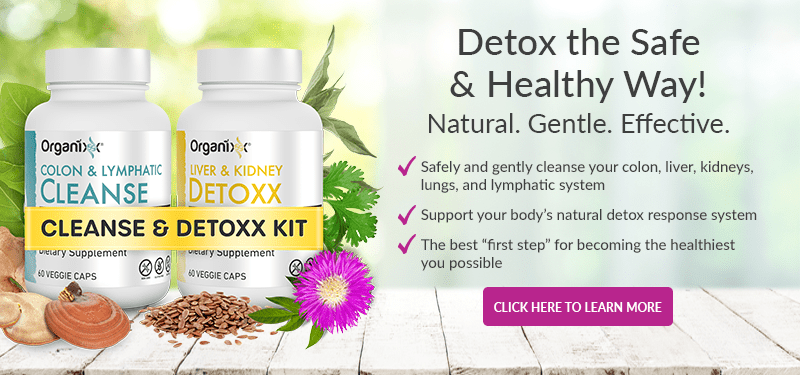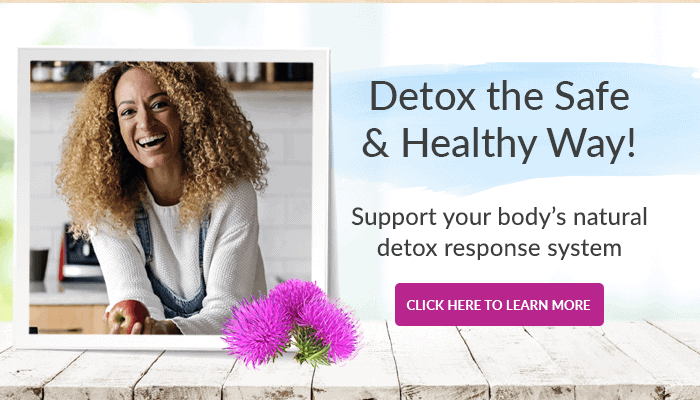Video Transcript:
Today, I want to talk to you about how to optimize health for men, and this is a really important topic because a lot of men rely on their partners, their spouses, to give them advice and tips on what supplements to take. Often, we as women in our households are supplying our gentlemen with supplementation.
Support Your Healthy Habits
So today, I’m going to offer some advice for any of you ladies who want to power up and support your male partner’s health and enhance their wellness, as well as any of you gentlemen looking for some basic guidance to help support your overall health. And this is going to really support and supplement any of the good, healthy lifestyle habits and maybe current lifestyle changes you’re implementing where you’re eating healthy foods, maxing out your sleep, and lowering your stress.
Address Nutritional Deficiencies
So, the first and most important thing for men to consider taking is a whole-food, plant-based supplement, and this is really, really critical because the multivitamin that has a good amount of bioavailable, plant-based nutrition can really create a foundational piece where you get a lot of the daily requirements of your nutrients, and a lot of health issues, when we look at aging and degeneration within the body, a lot of our problems or challenges ultimately come back to nutrient deficiencies.
So, I’m very excited to recommend the Multi-Vita-Maxx. This is our plant-based, powerful multivitamin. You’re going to get all of the required daily requirements of both your vitamins as well as key minerals like magnesium, and zinc, and chromium, which is really important for gentlemen looking to balance their blood sugar levels. I also like that this is a fermented form of a multivitamin, which enhances the bioavailability of this nutrition.
Get the Gut Healthy
Now, the second thing that’s really important is for gentlemen to support their gut health. We have a term that we reference to the balance of bacteria in the gut, and we call it the microbiome. That’s an assortment of bacteria that we want to be balanced and we want it to be very plentiful and very similar to like a coral reef – we want to have multiple types of bacteria that create this kind of rainbow cascade of good bacteria that balances our body.
And in one of my masterclasses, I host masterclasses every month, I have one of my masterclasses that digs into mastering your gut health and ultimately supporting your gut microbiome. One of the things I share in that class is that the microbiome, our microbes, the actual bacteria, enhances our hormone levels and it can actually influence our immune system and it can influence the inflammatory response in the body.
So, for any gentlemen who might be dealing with diabetes, or gout, or liver imbalances, maybe elevations in cholesterol and triglycerides, or even gentlemen who might be dealing with prostate imbalances, it’s really important for us to look at adding a good probiotic.
And we have ProBiotixx+, which is a very powerful form of L. plantarum, which we know is one of the super plentiful bacteria types that can help culture and rebalance your gut. So, making sure you get a good probiotic can be very beneficial in enhancing your overall gut health, which can balance your digestive grievances like IBS, or CIPO, or gas and bloating after consuming a meal, but it can also power up our brain health and balance our hormones.
Combat Inflammation to Prevent Illness & Disease
Now, another thing that is really important for men is to address inflammation. Ultimately, inflammation is the root of all illness and disease within the body, and systemic inflammation is something we need to combat. And signs or symptoms of inflammation can be swelling, it can be elevations in enzyme levels like our ALT and AST – those are labs that identify enzyme levels in our liver. We will present with hormone imbalances. Men will have elevations in prostate markers like PSA will be elevated or experience benign prostatitis. Other individuals might experience heart disease. And so rooted behind all of these illnesses and diseases is ultimately inflammation. Our cells, our cytokine process is overwhelmed and heightened, and there are really two ways that I use some supplementation here to combat inflammation.
The first thing is magnesium, a very well-balanced, multi-magnesium, like we have Magnesium 7. This can be really helpful in minimizing inflammation that gentlemen experience in their joints. Maybe you have joint pain, or osteoarthritis, or rheumatoid arthritis, and even gout.
Swelling is a byproduct of inflammation. So, if you notice you’re holding more fluid, Magnesium 7 is what I recommend. I’m kind of an expert in the swelling category, I’m specialized in lymphatic therapy, which is all about moving the excess fluid in the body. We use magnesium to flush fluid out of the body and it will flush fluid through the kidneys and bladder and you might notice a reduction in fluid retention of upwards of three to five pounds on the scale. So, Magnesium 7 is great for lowering your inflammation levels.
Address the Reduction in Stomach Acid & Enzymes As We Age
And then, last and final is at the age of 30, for all of us, men and women, we have a reduction in stomach acid levels and we start to notice that the pancreas is not producing enough digestive enzymes. That ends up leading to digestive grievances, imbalances in our digestive process, an inability to digest our food, assimilate the nutrients, and power up the body. That can also lead to constipation, and leaky gut, and gut-brain, gut-heart, gut-thyroid imbalances.
So, one of the best ways to combat this lowered stomach acid level and a reduction in digestive enzymes that your pancreas is producing – which by the way can often be an undercurrent for diabetes – Enzyme 17 is something you want to add to your daily practice and this is something where you take two of these supplements, about 20 to 30 minutes before you consume a meal.
Enzyme 17 is one of the most plentiful enzyme blends that is out there on the market. It’s one of my favorite products we have here at Organixx, and it can help your body digest and break down the assorted macro and micronutrients that you need to support your body.
Additionally, here is a bonus tip that I tell all my patients. If you are dealing with any inflammation, or maybe you have digestive imbalances you notice. Maybe there are food particles that you’re passing in your bowel contents. Enzyme 17 is something you can take at night on an empty stomach and it will help reduce the digestive grievances and will help clear up systemic inflammation.
So, that’s a little bonus tip, but overall, these four items are going to be very helpful in supporting overall men’s health, and are basic foundational elements that every gentleman should add to his daily supplement regimen. So, that’s my tip for you and I hope you share that with any of the gentlemen in your life. And gentlemen, if you have any questions about health and wellness, make sure you comment and hit that reply button and I will be taking questions and answering them in future videos.
Organixx Enzyme 17 contains a whopping FIVE kinds of powerful protease enzymes in combination with one of the most advanced enzyme blends on the planet. It’s scientifically designed to help your body break down and process nutrients for better absorption, digestion, and overall health.

A new year is a fresh opportunity to turn over a new leaf. Many of us will make new year’s resolutions, deciding to be happier, healthier, smarter, or wealthier by the end of the year. A few will succeed at their resolutions, but many more will not.
What usually ends up happening after making those resolutions is that we take massive action and white-knuckle it through those first few weeks. We make ourselves do things we probably really don’t want to do, only to eventually (in our own minds, at least) fail miserably at what we were trying to achieve.
So, how do we NOT do that? How do we develop new daily healthy habits that are helpful, easy, and feel natural? And better yet, help us to end the year in triumph rather than failure?

In this article, we’ll share with you some helpful information put forward by James Clear, author of the popular book Atomic Habits [1]. Clear is also the creator of the esteemed Habits Academy and an authority on creating workable healthy daily habits.
He has some excellent suggestions to help us bring healthy habits into our lives without tremendous effort or “white knuckles.” It’s all about helping us get onto a new trajectory and enabling us to achieve our goals, whatever they are.
Habits, Goals & Systems
What is a Habit?
A habit is a behavior or a routine that’s performed on a regular, and in many instances, an automatic basis. A habit is a mental shortcut that you’ve learned, and can be good for you, or not-so-good for you.
It’s been said that the quality of our lives depends upon the quality of our habits. Stick to the same habits you’ve always had, and you’ll end up with the same results you’ve always gotten. Believe it or not, 40% to 50% of our daily actions are done out of habit!
What’s Your Goal?
If you wish to make an improvement in your life, you must first decide upon your goal, the direction you wish to head. It doesn’t work to simply have a goal, however. You also need a system with which to attain that goal.
A System Will Get You to Your Goal
A system is all about the series of steps that will help you attain your goal and create that new healthy habit. Once you decide upon your goal, then you need to forget about the goal and instead focus on the system that will get you there.
Clear states “You do not rise to the level of your goals, you fall to the level of your systems.” So, the system is an important part of reaching a goal, but the steps don’t need to be huge. In fact, it’s better if they aren’t.
Small, Incremental Improvements Are the Key to Creating Healthy Living Habits
No doubt you’ve noticed that acquiring a healthy habit can be difficult, so in the beginning, it’s important to start small. By implementing a system of continuous small improvements, you will get to the goal you desire.

For instance, if you want to start running to improve your health, rather than going for a 60-minute run (which might be difficult to start with), just start out running for 10 minutes. Instead of aiming for 25 daily pushups, start with five really good ones. Making small, incremental improvements on a daily basis is better and more sustainable than massive action.
In fact, starting small and keeping with it for a year can mean that by getting only one percent better each day for one year (at whatever you’re working on) by the end of the year you will be 37 times better at what you’re doing! That’s a notable improvement.
Master the habit of showing up and doing what you need to do on a consistent basis. The most effective change comes little by little, day by day.
Beware of Letting Your Healthy Habits Slide
This can work both ways, so you need to be vigilant of the choices you’re making. Making a choice that is a tiny one percent better or one percent worse might seem insignificant in that moment, but over a span of time can mean the difference between achieving your goal or completely missing it.
Be aware, too, of not allowing a bad habit to sneak in. Otherwise, before you know it, your forward movement can completely stop. Procrastination is one of those bad habits and allows a decline in daily habits enough that it can completely wreck your initial goal quickly.
Who Do You Want to Be?
One of the reasons it can be difficult to change habits is that we go about it in the wrong way. Author Clear says that rather than focusing on the goal you want to achieve, it helps immensely to focus instead upon who you wish to become once you’ve attained that goal.
It’s a subtle but powerful shift in thinking: being a person who WANTS a thing, versus being a person who IS that thing. For example, your goal might be to learn a new instrument. But in order to do so, it helps to think of yourself as a musician.

This can require a change of beliefs about yourself. For instance, if you wish to make more money but deep down you fundamentally believe you can’t do it, or are unworthy of more money, guess what? Your belief about yourself will be what comes true.
The person who deeply believes there are no good partners out there will never attract a healthy relationship. The kid who believes he’s horrible at math will find it quite difficult to improve his math scores.
If you have negative beliefs, this can get in the way of your attainment of a goal. This happens because there’s internal pressure from your subconscious mind to maintain a self-image and to behave in a way that’s consistent with your core beliefs.
It’s quite difficult to change your habits if you never change the underlying beliefs that have led to your past behavior. In order to unlearn those old beliefs, you must continually edit your core beliefs.
Are You Proud of Your Healthy Habits?
In his book [1], Clear shares that the more pride you have in a particular aspect of your identity, the more motivated you will be to maintain the habits associated with that identity. You might start a new habit, but the real reason that you’ll stick with it is that it becomes a part of your identity.
The Feedback Loop
Once you’ve decided upon who you wish to become, then you must prove it to yourself that you are that someone. You do this by creating small wins. This is where you take those small, incremental steps toward being that person (and eventually achieving that goal).
Your daily habits shape who you are, just as who you are shapes your daily habits. It’s all one big, continuous feedback loop.
The Four Laws of Behavior Change
According to James Clear, there are four laws of behavior change that are fundamental when trying to create a new healthy habit. If any of these four things are lacking, you may not be as successful with goal attainment as you might wish.
#1. Make it Obvious
Having good intentions is not enough to form a new habit, because it’s all too easy to ignore good intention. When you make a plan to begin a new habit, you need to schedule time for it and decide how you’ll go about it and THEN TAKE THE STEPS to do it at the appointed time.

Studies have shown that people who make a specific plan for when and where they will perform a new habit are more likely to do just that. Leaving it up to chance and hoping to remember to do the thing simply doesn’t work.
Put this on a piece of paper or say it aloud: “I will [whatever you wish to do] at [time] in [location].” Then follow through and don’t let things stand in the way. Clear says “Give your new habits a time and a space to live in the world.”
#2. Make it Attractive
Pairing the new healthy habit you wish to acquire with something you already need to do helps you to remember to do it. Or you could pair the new habit with something you really enjoy. Do the harder task first and use the enjoyable thing as the pay-off.
#3. Make it Easy
Make the new habit as easy as possible to perform, thus reducing the chances you will ignore it or forget it or think it’s too much trouble.
Prepare your environment ahead of time to reduce the chance of failure, automate things wherever you can, and implement those small steps that lead to performing the new habit.
#4. Make it Satisfying
Pleasure teaches the brain that a particular behavior is worth remembering and repeating. Positive emotions help us to cultivate a new habit, so make practicing your new healthy habit as pleasurable as possible. If you need to, give yourself a small reward immediately after you perform the new habit.
15 Ways to Make Your Healthy Habits More Likely to Stick
Drawing upon some of the many wonderful tips provided in Atomic Habits [1], here are 15 great ideas that will help you stick with the new healthy living habits you want to bring into your life this year.
1 – Habit Stacking. Make a list of the daily habits you perform each and every day. For instance, get out of bed, make a cup of coffee, take a shower, get dressed – all of the habitual things that you do on a daily basis.
Next, think about the new habit you want to start. Identify a current habit from your list that you already do daily and plan to perform the new habit right next to the current habit. Called habit stacking, this helps you to remember to make time for the new habit.
For instance, if you want to meditate more, choose to do it right before or right after something else you do like after eating your lunch, or after you have brushed your teeth but before going to bed. See the specificity there? If your new habit plan isn’t vague about when/where it will occur, it is more likely to be carried out.

2 – Timing is Important. Be sure to consider when you’re scheduling your new habit to occur. If you wish to schedule more time for meditation, for instance, it helps to schedule it at a time when the house is quieter and you’re less likely to be disrupted.
3 – Visual Cues. When starting a new habit, you’re more likely to remember it if you place more visual cues around your environment. For instance, if you want to start drinking more water, fill up bottles or glasses with water and place them at various points around your home.
If you want to read more, keep the book(s) in a highly visible spot. If you want to eat more fruit, have it sitting out in a bowl (and put the chocolate away). The habits you stick with usually require multiple visual cues.
4 – Create a Space for the New Habit. Sometimes it’s easier to begin a new habit in a new environment. For instance, if you want to begin doing yoga, turn an unused corner of your house into an attractive place to do yoga. If you want to begin writing, get a small desk and place on it all of the things you’ll need to do that task. Over time, a small change in context can lead to bigger changes in behavior.
5 – Reduce Exposure to Cues for Bad Habits. If you’re trying to break a bad habit, figure out what is causing the bad habit to occur. Once you’ve figured out the cue for the bad habit to occur, reduce your exposure to what’s causing it. For instance, hanging out with your friends at the local bar is a bad place to be if you’re trying to stop drinking. Spend less time in a tempting situation.
If you can’t get any work done because you’re distracted by the bleeps created by social media, put your phone into another room while you work, or turn it off. Rather than trying to over-ride your willpower, you’re optimizing your environment which is an easier thing to do.
6 – Make Your New Habit Attractive. Habits are driven by a neurotransmitter known as dopamine. If you want to increase the odds that you’ll continue with a healthy habit, you need to make it attractive; even irresistible.
The most highly habit-forming actions like gambling, taking drugs, and eating junk food are driven by dopamine. And studies have shown it’s the anticipation of pleasure, rather than the actual reward, that releases dopamine and gets us to take action.
In order to make your new healthy habit more attractive, you need to associate it with something pleasurable. For instance, if you want to lose weight, you could decide to only watch your favorite TV show while riding a stationary bike.
7 – Join Others Who Are Doing What You Wish to Do. We are, as humans, like pack animals. We do better in herds, and we tend to soak up the qualities and talents of those we run with. If you wish to bring about a particular change in your habits, you have a better chance if you spend time around others doing that thing as well.

For instance, if you want to begin running, do it with a friend who’s into running. If you want to learn about classical music, join a classical music appreciation group.
You can take it one step farther by finding a group to which you wish to belong that has an additional thing in common with you. For instance, you want to read more and you love historical fiction, so join a historical fiction book club. Or say you want to learn gardening and you also admire bonsai, so join a bonsai club.
8 – Adopt a Positive Mindset. Rather than thinking “I have to” in relation to your new healthy habit, think “I get to.” Instead of thinking “I have to exercise now,” try thinking “I get to exercise now.” This helps you to make a subtle mind shift and reframe the thought to something more positive. Positivity reinforces your desire to achieve that goal.
9 – Make the New Habit Easy. The less energy that is required to perform a new habit, the more likely it is that you’ll stick with it. For instance, prior to starting a weight loss plan, make up a menu for one week of meals. Then make a shopping list for all of the things you will require to make those meals.
Do the grocery shopping from your list and ensure that you only have healthy food on hand. If all of that is too difficult and you can afford it, sign up for a food delivery service that will only deliver ultra-healthy food to you. It’s all about creating a path of least resistance for that new healthy living habit you’re trying to adopt.
10 – Create a Ritual. Rather than trying to perfect your habit right at the start, do something easy to begin the habit on a regular basis. You have to standardize before you can optimize.

For example, the easy part of going for a run would be putting on your running shoes. That leads to a natural progression of you going out the door and actually going on that run. If you want to write a book, show up at your desk at the same time every day, sit down, take a deep breath and focus your mind. That’s the easy part, then the natural progression is choosing your words and starting to write.
James Clear says the more that you ritualize the start of the process, the more likely it is that you will slip into that state of deep focus required to do great things.
This helps to reinforce the identity you’re trying to create and you’re not worried about writing the book. You’re simply focusing on being the type of person who shows up at a certain time each day to write. Make it easy to start out, then the rest will follow.
11 – Make a Bad Habit Impossible (or at least difficult). If you’re trying to quit a bad habit, make the habit impossible. For instance, if you’re trying to stop gambling, ask to be banned at the casino you go to, as well as any online gambling websites you might visit.
If you’re trying to eat healthier at lunchtime, pack a healthy lunch and leave the money or cards in your wallet at home. If you want to stop smoking, stop buying cigarettes and tell your friends not to give you any, no matter what.
If you want to go to bed earlier, have a timer installed on any devices that keep you up late, like the internet router or the television. When the device goes off, go to bed.
12 – Reward a Non-Action. If all you’re doing with your new habit is resisting temptation, like not buying that pair of beautiful new shoes or not smoking that cigarette, it can be hard to feel satisfied, which is what the brain wants.
A solution to that problem is to make the non-action more satisfying. When you pass up making a purchase, deposit the same amount of money you would have spent into your savings account. Didn’t buy that pack of cigarettes? Put that money into the savings account. Walked away from the cinnamon roll? Ditto. Save for something you really want – like a great vacation or a new car – whatever is motivating to you.
13 – Track Your Progress. The simplest way is to get a calendar and place a mark on each day that you’ve performed the new habit. Do it as soon as you’ve completed it so that you don’t forget.

Tracking your progress visually is very helpful as it’s obvious to see whether or not you’ve been keeping up with your good intentions to create this new habit.
If you’re trying to read more, keep a diary of the books you’ve read. If you’re trying to improve your volume of sales calls at work, make a logbook of each and every sales call you make. If you’re trying to lose weight, keep a food diary and list everything you’ve eaten in it (that can be very confronting and it helps keep you honest).
Studies have shown that people who keep a daily food diary lose twice as much weight as those who do not. It reduces the chances of mindless snacking. Since you don’t want to write down “ice cream” or “cinnamon roll” in your tracker you’re less likely to eat it!
Tracking a habit is also a visual signal that we’re moving forward with our goal; that we’re getting closer to the person we wish to become. This is one of the reasons that devices such as the Fitbit® are so enormously popular.
14 – Don’t Miss Twice. If you miss a day or session of performing your new habit, just get back on track the next day – or as soon as you can if illness or an emergency intervenes.
Missing occasionally won’t start you down the road to failure but not getting back on track immediately certainly will. Even if you feel you’re performing the new habit badly, or less optimally than you normally do, that’s not the end of the world. The important thing is that you show up and make an effort.
15 – Take on an Accountability Partner. If you want a really good way to prevent bad habits from taking place and ensure you get to your goals, it helps to get an accountability partner and create a habit contract. We tend to repeat bad habits because they serve us in some way, but if a speedy punishment results from the bad habit, we’re very much less likely to repeat it.

Then get yourself an accountability partner or two. Decide upon the “punishment” you’ll receive if you don’t reach your goals, such as paying the other person a sum of money, or taking them out to an expensive, lavish dinner. You could also forego a planned vacation or resolve to purchase no new clothes for six months.
You get to decide the consequence. Then put all of this into a contract (the habit contract) and make sure your accountability partner has a copy and is prepared to enforce it. This can be a remarkably effective tool to get you to stick with your healthy habits!
The Goldilocks Rule of Habit Formation
While you’re setting yourself up for success with your goals, it’s good to be aware of the Goldilocks Rule. This states that people experience the most motivation when working on tasks that are right on the edge of their current abilities – about four percent beyond their current ability. Not too hard, not too easy.
It’s good to make the new habit as easy as you can to perform so that you stick with it, but don’t stop there. Continue to advance, to stretch yourself in small ways so that progress is being made and you’re constantly improving.
Finally, don’t try to create a habit that goes against your grain. Just because someone tells you that you need to begin doing something, if it doesn’t resonate with you or if the very idea of it fills you with dismay, don’t go there! Choose a healthy habit that best suits you and your interests.
New habits need to be enjoyable and have a good payoff for you if you’re to stick by them. Be creative! Thoughtful preparation towards achieving your new healthy habit is clearly beneficial and sets you up for success. Good luck with whatever you’re wanting to achieve this year and beyond!
Organixx Cleanse & Detoxx is a two-step formula that provides a gentle yet powerful full-body detox using organic botanical ingredients. Naturally purge your body of toxins, chemicals, free radicals, heavy metals, waste, as well as bacteria, and pesticides. Easily cleanse your colon, liver, kidneys, lungs, and lymphatic system resulting in increased energy, and better digestion with more nutrient absorption, in addition to improved immunity, mental clarity, and overall health and wellbeing.

Video Transcript
Dr. Susan Peirce Thompson: We are living in the dark ages around food. I don’t know if you guys remember the movie, Forest Gump? Did you see that movie, right?
TeriAnn Trevenen: Yeah.
Dr. Susan Peirce Thompson: And when Forest is a little boy, and he’s seeing the doctor, and he’s saying about his crooked spine and stuff, and the doctor’s got a cigarette hanging out of his mouth. Do you know that scene? That’s the state of our society around food right now, where we are becoming overweight and obese at breathtaking, gobsmacking, horrifying rates.
Our kids are destined to have Type 2 diabetes at levels that we’re going to be watching this generation of kids have legs amputated and go—and be going blind in their 30s and 40s at mass numbers. And financially, as a society, we can’t afford it. Like the heart disease and diabetes and stuff, we’re about to go bankrupt on a global scale because of how we’re eating.
And we’re still at the point where if you try to stay “No, thank you,” to pumpkin pie on Thanksgiving, people give you a hard time, like you’re some sort of ridiculous version of a like overzealous, like “Nobody diets on Thanksgiving, come on.” It’s like in 1950, and you’re trying to say “No, thank you,” to a cigarette, or 1970, and you’re trying to say “No, thank you,” to a drink on New Year’s Eve.
Now I haven’t had a drink in a long time. Nobody harasses me on New Year’s Eve if I try to stay “No, thank you,” to a drink. If I say, straight up, “No, thanks. I don’t drink,” they go and find me some sparkling water to put in my champagne glass, right? They’re cool. But if I try to say, “I don’t eat sugar,” on Thanksgiving, they give me a hard time, like I’m being ridiculous, right?
TeriAnn Trevenen: Well, and nobody wants to talk about the fact, we’ve talked about this multiple times on different episodes about food not even being real anymore. A lot of the food that people are eating is not even food.
Dr. Susan Peirce Thompson: Right.
TeriAnn Trevenen: It’s not food.
Dr. Susan Peirce Thompson: Right. Just because it’s edible doesn’t make it food.
TeriAnn Trevenen: Right.
Jonathan Hunsaker: Well, and it’s the whole fat-free movement, right?
Dr. Susan Peirce Thompson: Right.
Jonathan Hunsaker: That I think has also moved a lot of this faster, right? To get rid of the fat, we just added a bunch more sugar.
Dr. Susan Peirce Thompson: Yeah.
Jonathan Hunsaker: And so, it’s made, so…
TeriAnn Trevenen: The chemicals—
Jonathan Hunsaker: That’s for another episode that we will do in a little bit about sugar addiction. But let’s get back to the holidays because I think it’s a very relevant point, right? That—and I, I’m not shy about it, I smoked for 20 years. I was very unhealthy. I quit smoking close to five years ago. Anybody that knows me now, like would never judge. When I say “No, I don’t smoke,” or anything like that, they’re not going to try to push a cigarette on me. That would be absurd, right? The same thing with somebody who drinks, or you say “No, I don’t drink,” or “I’m sober.” It would be absurd for you to push a drink on that person.
Dr. Susan Peirce Thompson: Yeah.
Jonathan Hunsaker: But we’ll push sugar.
Dr. Susan Peirce Thompson: Yeah, food.
Jonathan Hunsaker: We’ll push crap on people without, without any second thought.
Dr. Susan Pierce Thompson: Without even knowing we’re doing it, yeah.
Jonathan Hunsaker: And a lot of times, it’s Aunt Jane, that’s 50 pounds overweight…
Dr. Susan Peirce Thompson: Yeah, totally.
Jonathan Hunsaker:—that’s pushing it on you, that’s not healthy. And you’re trying to get healthy. But it makes her feel like crap because you’re drawing a line in the sand and you’re trying to be healthy, and it’s like “Oh no, well, if I’m going to be unhealthy, I want to bring everybody down with me.”
Dr. Susan Peirce Thompson: And a lot of what I do, and the Bright Line Eating Approach that I teach, is I help people navigate those social situations with their families, with the Aunt Jane who has baked something gluten-free and/or—whatever, out of spelt flour and agave syrup, or whatever, and she’s handing you these baked goods, and she’s like “I know you’re on a special thing…”
I’m not going to eat it. How do you language that to her? How do you get through the family? Because breaking bread together is a very primal thing, right? And how do you keep your relationships intact? How do you stay close to the people that you want to be close to? Jonathan, so okay, right here, right? I’m in your home.
And last night, we were on the phone, and I said “Let’s talk a little bit about the food for tomorrow because I just went to Whole Foods and I got all my food. I’ve got enough food to like get my dinner for tomorrow.” And you’re like “Well, I got this and that and the other.” And now, I have a choice point of like am I going to eat what you’re serving? Am I going to break bread with you in your home, eating your food?
And I decided to because you were—you told me what you were serving, and it was like foods I eat, right? But there is this sort of dance, this negotiation that has to happen when you decide to swim upstream from society’s expectations around food and not go with the healthy—with the unhealthy flow of food products that everybody else is eating. You decide you’re only going to eat whole, real food, in whatever way you want to spin that, and there are relationships to navigate.




